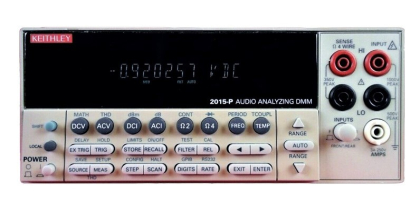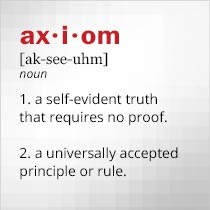Maintaining Audio Quality That Makes a Difference
January 04, 2023
 |
Audio signals are essential to many modern electronic systems, as a means of communicating test results and often serving as a warning. Audio analysis is the process of understanding information from sound and what it might say about equipment under test. Testing helps to discover unwanted distortion and noise made by the audio equipment and possible how to remove or at least reduce the levels of noise compared to the audio signal levels. It requires a reliable sound source and a signal analyzer at least capable of operating within the audible frequency range.
Fine-tuning electronic equipment for audio performance whether for use or for production can be accomplished by a variety of techniques, in the frequency domain or the time domain and usually to gauge the consistency of the signal amplitude and/or phase response as a function of frequency across the operating bandwidth. Typically, the human hearing range extends from 20 Hz to 20 kHz although some test setups are geared for DC-coupled measurements, and some extend beyond the range of human hearing. Audio signals are subject to various forms of distortion and noise from other energy sources and must be tested against the effects of unwanted signal-to-noise radio (SNR) or even unwanted crosstalk between channels in a multichannel audio communications system. With appropriate software, Fast Fourier Transform (FFT) analysis allows a visual depiction of the sounds under investigation to be viewed on a computer screen.
Audio signals serve many different purposes in electronic equipment, to draw the attention of human hearing and other listeners, such as a family pet, who may be warned away by the sounds. The sounds may be as simple as a ringing alarm or a caller’s message on a telephone answering machine. For an important message, clarity and accuracy are essential, rather than trying to decipher the message from a background of distortion and noise. Poor audio performance can make the difference a message that is fully understood and a number that was “lost in translation.”
Proper audio testing with the right equipment can help ensure that the best message is properly understood and not lost in the distortion and noise. Audio is still an important part of any communications strategy and suitable audio testing requires a measurement setup with the capability to generate well-controlled audio signals and the analysis power to accurately decipher any added noise to the intended audio signals.
Depending upon the audio circuitry under test, the required audio test signal and analysis bandwidth may be the typical range of human hearing, which is 20 Hz to 20 kHz for which the amplitude response can change rapidly as a function of frequency. Lower-frequency spectrum analyzers with DC-coupled bandwidth are often used for audio analysis because of its capability to clearly show movements in the signal and noise amplitude response as a function of swept frequency. Often DC-coupled spectrum analyzers provide accurate audio responses while extending a measurement range onto the RF/microwave frequency range and these units can work as RF/microwave component testers as well as audio analyzers.
For cases where the audio response goes far beyond human hearing, the bandwidth requirements of the audio signal generation and analysis equipment may need be as wide as DC to 1 MHz to track the audio device under test (DUT). In such cases where normal human hearing is exceeded, audio signals can be shown in software generated form by means of a Fast Fourier Transform, to help identify where audio signals have strayed from a purely linear amplitude-versus-frequency response which could impact distortion performance at higher audio frequencies.
Maintaining reliable audio capability in electronic systems calls for a variety of analyzers and generators capable of commanding precision audio characteristics. Testing for audio quality is also greatly aided by dedicated software capable of extracting such performance parameters as audio quality, noise, harmonic and intermodulation distortion, and amplitude as a function of frequency. Audio measurement equipment and test sets typically consist of wideband audio generators and audio spectrum analyzers with high resolution of amplitude as a function of frequency. For some applications, two test channels may be enough but for audio applications with multiple channels, many test channels are needed in a solution.
Hearing a Difference
Since modern electronic systems may pack audio into many channels, a choice of the number of measurement channels can help when selecting an audio test solution. Some test systems, such as the audio analyzers in the APX52x Series from, are modular, with a choice of number of test channels from model to model. For example, the Audio Precision APX525 audio analyzer has two analog input channels while the Audio Precision APX526 has four analog input channels. Audio analyzers such as the model APX525 incorporates a sinewave generator has a range of 0.1 Hz to 80.1 kHz and 3 ppm frequency accuracy to establish a reliable test tone for wideband testing such as small-signal devices as smart phones, tablets, set-top boxes, and DVD players. The built-in audio source features a 20-kHz bandwidth with residual bandwidth + noise of -105 dB + 1.3 μV. It can also be equipped with a square-wave generator and an HDMI option for digital testing.
The same firm provides APx585x series audio analyzers with 8 and 16 channels of audio measurement capability. The model Audio Precision APX585 has 8 simultaneous analog inputs and outputs for testing multichannel audio devices. It offers selectable output impedances of 20, 50, 75, 100, and 600 ? to match to most test environments and offers an HDMI port as an option. The Audio Precision APX586 includes a second input module for a total of 16 input audio test channels to assist with high-channel-count automotive audio testing. It delivers maximum balanced amplitude of 14.4 V RMS with typical THD + N of -107 dB. The high channel count helps speed testing but also helps reveal what may be missed in a lower-channel-count audio measurement setup.
Combining audio analysis to its familiar digital multimeter format, Keithley developed its line of 6.5-digit, digital audio analyzing multimeters including the Keithley 2015-P and Keithley 2016-P units. They include 20 Hz to 20 kHz sinewave generators and perform fast frequency sweeps; they provide frequency domain measurements and spectrum analysis. In addition to performing measurements of total harmonic distortion (THD), the multimeters can calculate total harmonic distortion + noise (THD + N) and signal-to-noise plus distortion (SINAD) to provide users insight into how an electronic device under test performs when subjected to high-level harmonic signals. Users can program the number of harmonics that are studied to the 64th harmonic. The multimeters can measure voltage, resistance, current, frequency, and distortion.
Testing audio is not always about working at such low signal levels and audio test setups assembled for characterizing high-power audio amplifiers must be signed to handle much higher test signal levels than business and commercial appliances. The test equipment built for driving a high-power audio amplifier must provide a variety of test signal formats, including sine waves and square waves and it must maintain a signal load while the amplifier is being tested under full rated power conditions, with whatever cooling or heat sinking added as required to maintain the amplifier under test under safe operating conditions.
As an example of a higher-power DUT capable of much higher output power, the AE Techron® 7224 audio amplifier is a DC-enabled 1 kVA amplifier capable of producing 1100 W RMS output power into an 8-? load and 40 ms pulses at 52 A peak into a 0.5-? load. When more power is needed, as many as four of these rack-mountable amplifiers can be connected in series or parallel. Typically used as a military waveform source, the amplifier is tested with single test tones at reduced levels.
Audio signals are essential to many electronic devices and must be tested as such. Audio is a part of modern communications and testing audio can be performed across a well-known bandwidth but at many power levels, from small-signal portable devices to robust power amplifiers. Testing usually starts with distortion and noise and minimizing their contents in audio signal. This sampling of test gear may not provide all the answers, but it may make the way in audio testing a bit easier to follow.
For any help in selecting the right assortment of units, please contact the Axiom Test Equipment’s sales department at sales@axiomtest.com, or by calling an Axiom sales representative at 760-806-6600.
Back to BLOG








